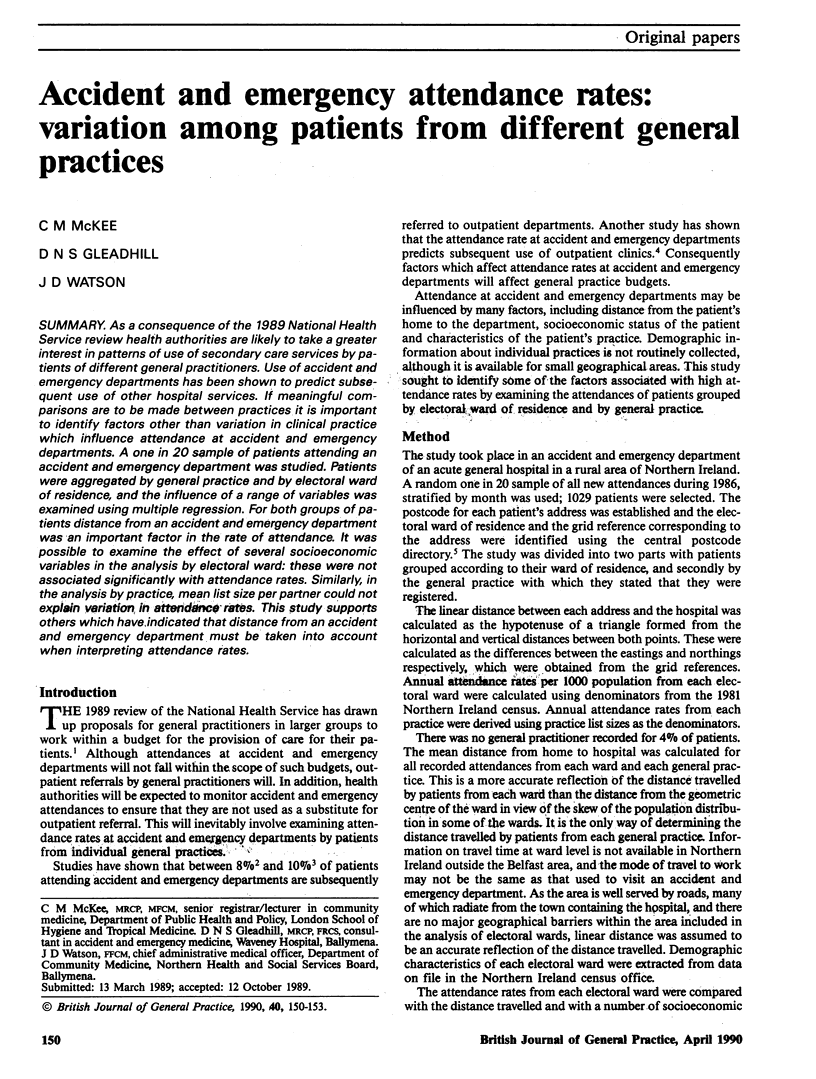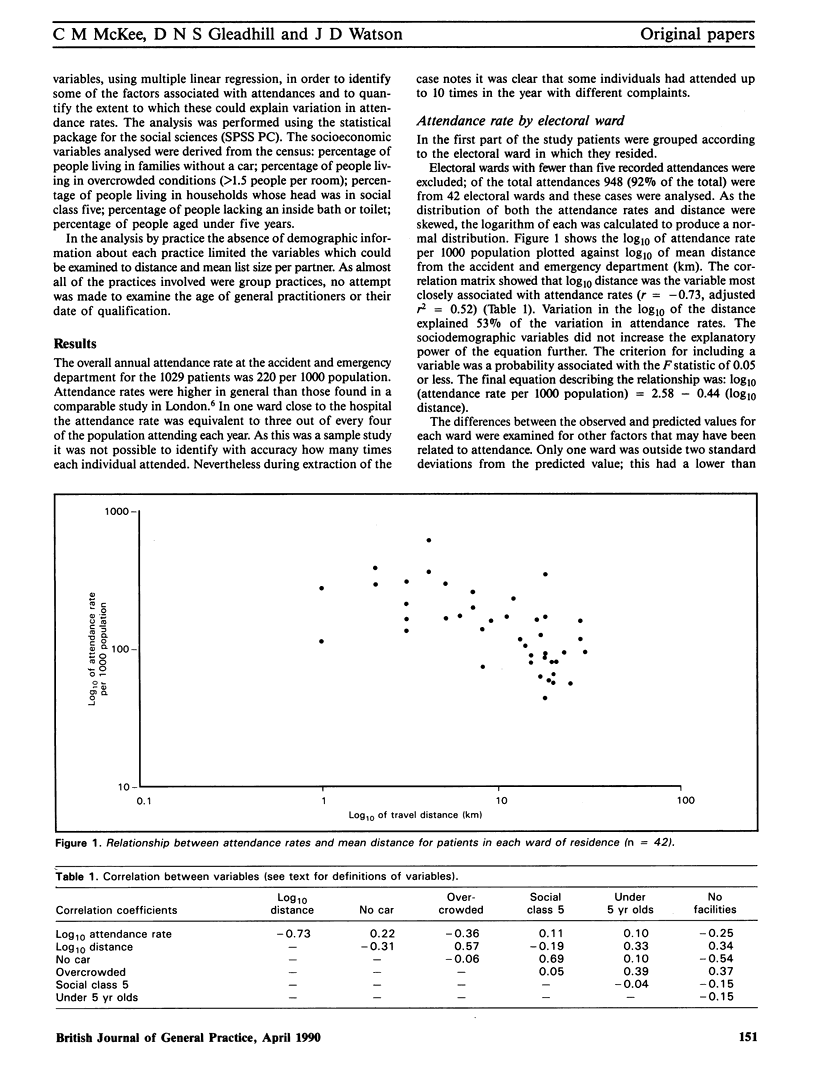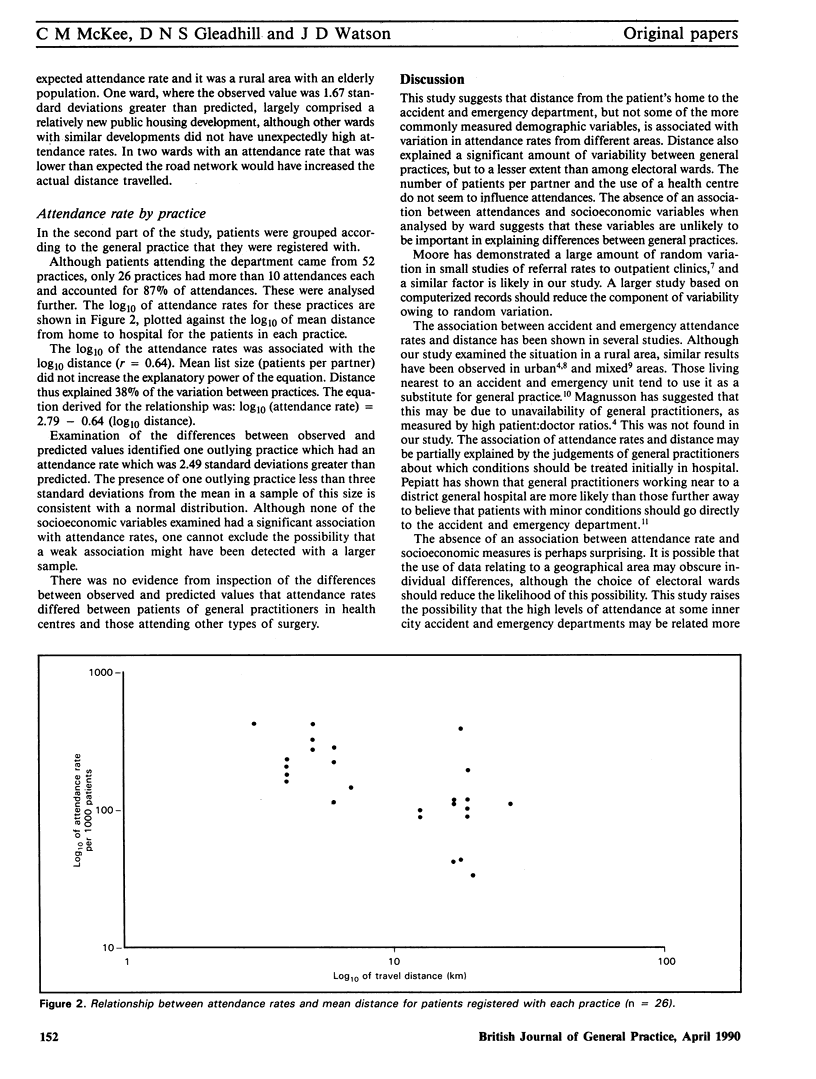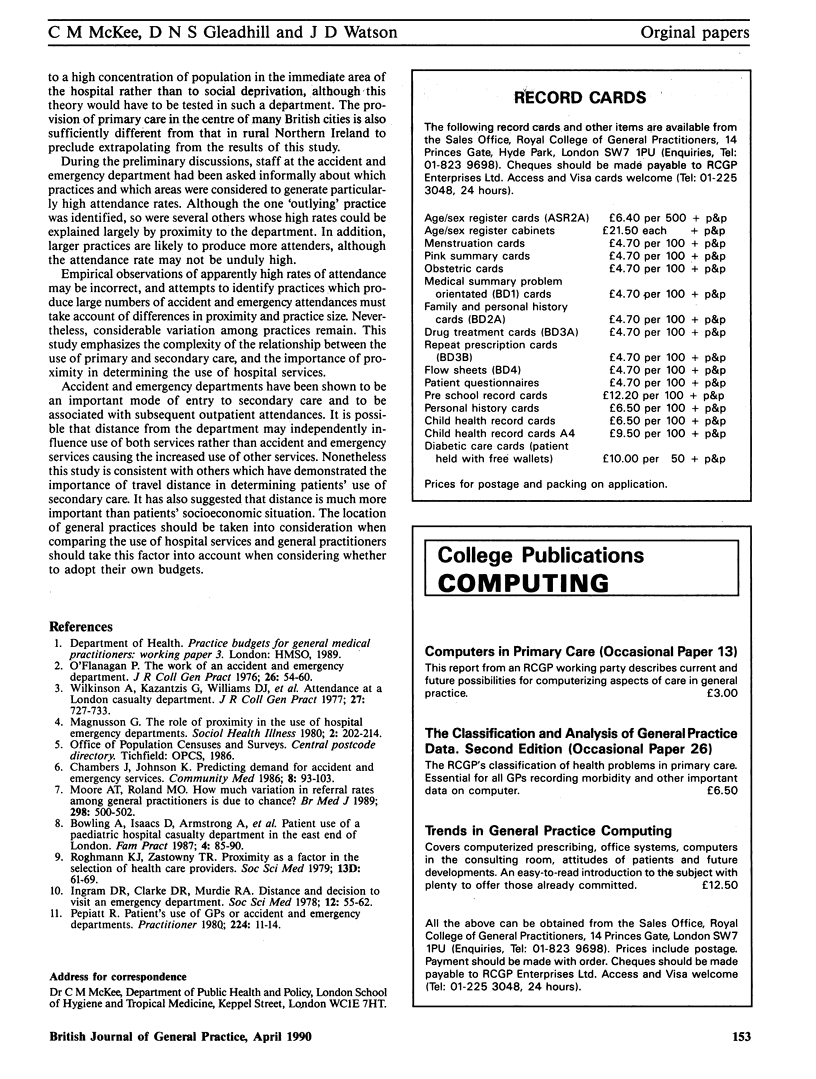Abstract
As a consequence of the 1989 National Health Service review health authorities are likely to take a greater interest in patterns of use of secondary care services by patients of different general practitioners. Use of accident and emergency departments has been shown to predict subsequent use of other hospital services. If meaningful comparisons are to be made between practices it is important to identify factors other than variation in clinical practice which influence attendance at accident and emergency departments. A one in 20 sample of patients attending an accident and emergency department was studied. Patients were aggregated by general practice and by electoral ward of residence, and the influence of a range of variables was examined using multiple regression. For both groups of patients distance from an accident and emergency department was an important factor in the rate of attendance. It was possible to examine the effect of several socioeconomic variables in the analysis by electoral ward: these were not associated significantly with attendance rates. Similarly, in the analysis by practice, mean list size per partner could not explain variation in attendance rates. This study supports others which have indicated that distance from an accident and emergency department must be taken into account when interpreting attendance rates.
Full text
PDF



Selected References
These references are in PubMed. This may not be the complete list of references from this article.
- Bowling A., Isaacs D., Armston J., Roberts J. E., Elliott E. J. Patient use of a paediatric hospital casualty department in the east end of London. Fam Pract. 1987 Jun;4(2):85–90. doi: 10.1093/fampra/4.2.85. [DOI] [PubMed] [Google Scholar]
- Chambers J., Johnson K. Predicting demand for accident and emergency services. Community Med. 1986 May;8(2):93–103. [PubMed] [Google Scholar]
- Ingram D. R., Clarke D. R., Murdie R. A. Distance and the decision to visit an emergency department. Soc Sci Med. 1978 Mar;12(1D):55–62. [PubMed] [Google Scholar]
- Magnusson G. The role of proximity in the use of hospital emergency departments. Sociol Health Illn. 1980 Jul;2(2):202–214. doi: 10.1111/1467-9566.ep10487794. [DOI] [PubMed] [Google Scholar]
- Moore A. T., Roland M. O. How much variation in referral rates among general practitioners is due to chance? BMJ. 1989 Feb 25;298(6672):500–502. doi: 10.1136/bmj.298.6672.500. [DOI] [PMC free article] [PubMed] [Google Scholar]
- O'Flanagan P. The work of an accident and emergency department. J R Coll Gen Pract. 1976 Jan;26(162):54–60. [PMC free article] [PubMed] [Google Scholar]
- Roghmann K. J., Zastowny T. R. Proximity as a factor in the selection of health care providers: emergency room visits compared to obstetric admissions and abortions. Soc Sci Med. 1979 Mar;13D(1):61–69. doi: 10.1016/0160-8002(79)90028-5. [DOI] [PubMed] [Google Scholar]
- Wilkinson A., Kazantzis G., Williams D. J., Dewar R. A., Bristow K. M., Miller D. L. Attendance at a London casualty department. J R Coll Gen Pract. 1977 Dec;27(185):727–733. [PMC free article] [PubMed] [Google Scholar]


